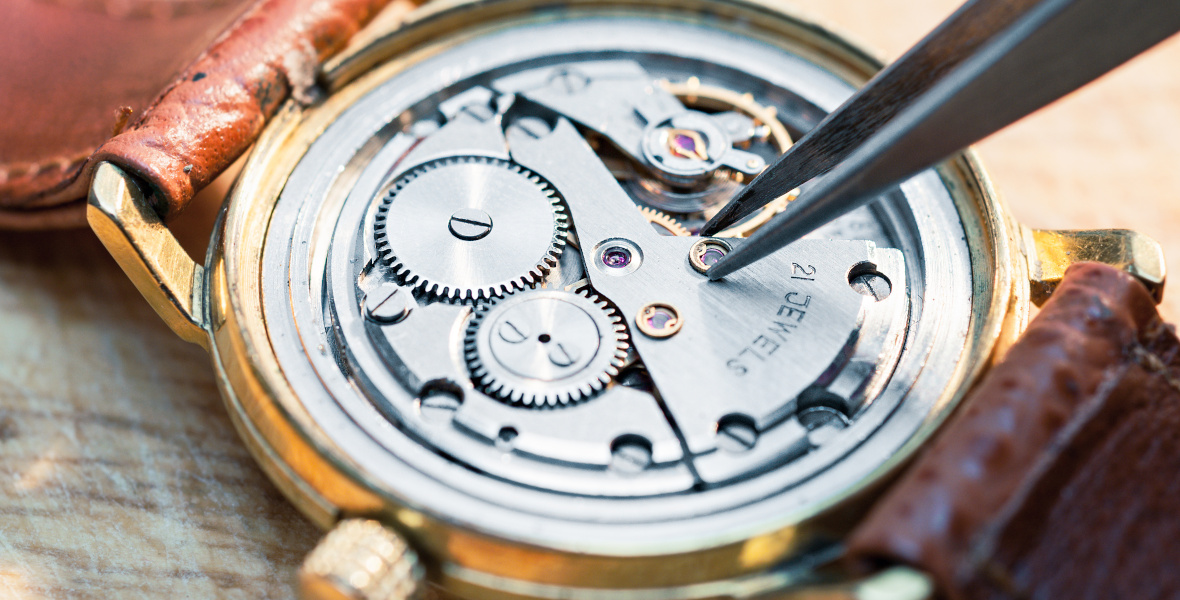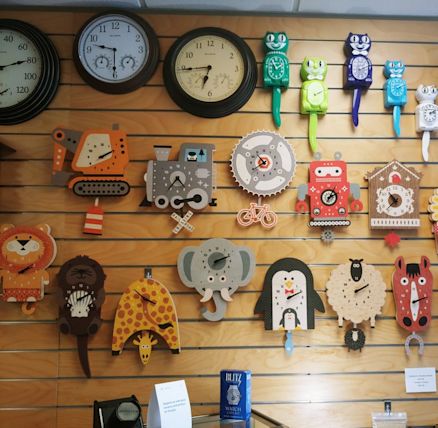

How one places the parts in the back of that tiny watch with surgeon precision boggles the mind.Ī yellow pre-Bakelite bedside Chippendale-style clock from around 1910 catches the eye, one that might be on the set of a Golden Age movie. A woman’s watch about a half inch square from the Art Deco 1930s is placed in the palm of my hand, so small and thin I can barely grasp it with my fingers. Hundreds of tools are lined up in front of this work desk. Some of the timepieces brought to him date from the 1600s or earlier and he must make parts from scratch after extensive research of drawings from antique trade books. He prides himself on making his repairs affordable because he genuinely wants a timepiece to be doing what it was meant to be: tell time. He can fix clocks and watches faster than many in his trade because of his long experience. “I accept everything but Korean watches,” he laughs. Gibbons estimates that he accepts an average of 70 watches a week and 30 clocks a month, which includes quartz watches as well as Swiss mechanism. He was a true artisan, who imparted that passion for excellence to his son.īusiness is brisk. In 1969, Timex was a mass-produced watch and accounted for one in every three watches sold in the United States, and being an inexpensive watch, he wasn’t convinced that people would have them repaired, so he decided to add clock repair to the business, thinking that if watch repair slowed down, he would be able to make it up in clock repair.” Gibbons Sr. “My father was a dealer and service center for Timex and many other watch manufacturers. Gibbons, who is now 58, started rewinding watches and clocks for his father, Edgar Sr., when he was six years old. Often pivots and bushings must be replaced, which will only deteriorate again in dormant state. He will educate the heirs in their maintenance, including proper watch rewinding. He wants these watches to be used and appreciated. If they are going to put the watch back in storage, he suggests they save their money. Gibbons is often frank with his customers. A historic train crash occurred because two watches along the railroad line were 10 minutes apart in time, because of a fast or slow mechanism, confusing the track signaling device. Railroad watches are highly collectible because they were the most precise watches for their time. Gibbons notes that it was the railroads in the 19th century that advanced the crucial need for exact time.

It was the advances in mechanism construction in clocks and then watches that could record minutes and then seconds that eventually led to the development of computers. The original clocks only advanced by the hour. The man who owned a clock, Gibbons explains, was often the most important person in the city. How momentous!Ĭlocks defined economic civilization in Europe. Both Gibbons and the heir looked at each other and beamed because they realized they were listening to the same chimes that Lincoln heard every day some 165 years earlier. Otto cleaned the clock, replaced deteriorated parts, and the clock chimed again. The heir brought in the clock with documentation. A memorable job was rejuvenating the desk clock with eight chimes that resided on the White House desk of President Abraham Lincoln. His pleasure is making these memories beat again. “Ninety percent of my business is sentiment,” he says. The shop of Edgar “Otto” Gibbons, Jr is in Balous Jewelers in Sanford where many Moore County residents make pilgrimages to him, hoping that he can make their family heritage go like clockwork. With over 40 years in the business, Otto’s Watch and Clock Repair is perhaps the oldest. The Sandhills has at least two who serve the area, and they both share a father/son lineage. North Carolina has by estimate only about five master watch and clock repairers. It can be expensive because parts cannot be found or must be remade.

Watch or clock repairers are getting more difficult to find. As vintage clothing and jewelry continue to trend, it’s time to resurrect some life into these old timepieces.

Many just stop functioning because they are not rewound, or the pivots and bushings deteriorate. Sometimes grandparents pass the watches on to grandchildren, where they are again stored away. The watches and clocks, however, may remain with the heirs but are often tossed into desks or dressers and safety deposit boxes, especially if they are cumbersome pocket watches. Old jewelry, pocket watches, clocks and other such sentimental items are passed on when a special family member dies, the jewelry itself frequently remade into a more current design. Graduations and Father’s Day bring about special gifts among family members, from a gold ring with a family crest to a watch once worn by a beloved grandfather. Rewinding the gift of an heirloom timepiece


 0 kommentar(er)
0 kommentar(er)
